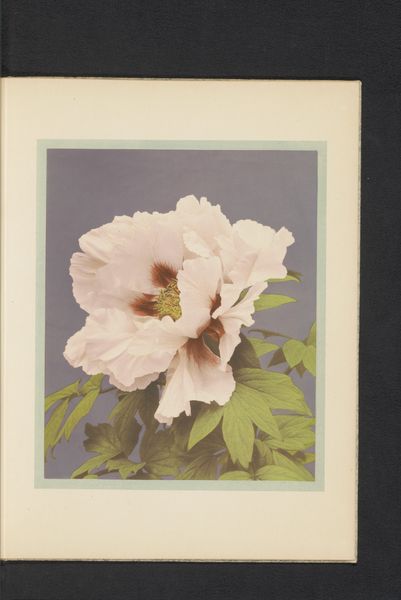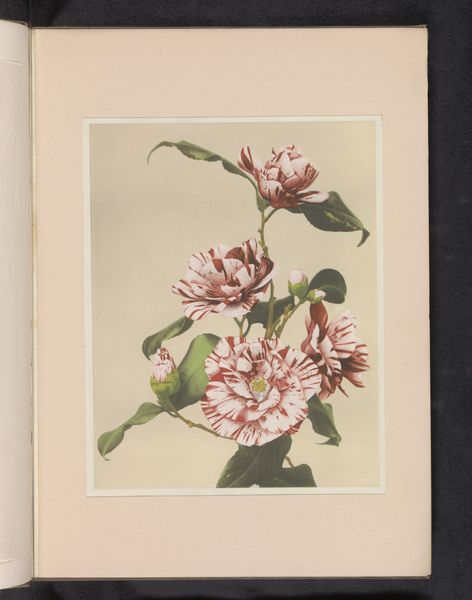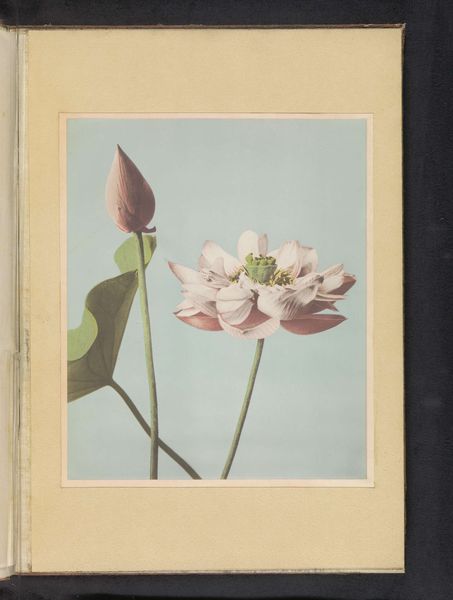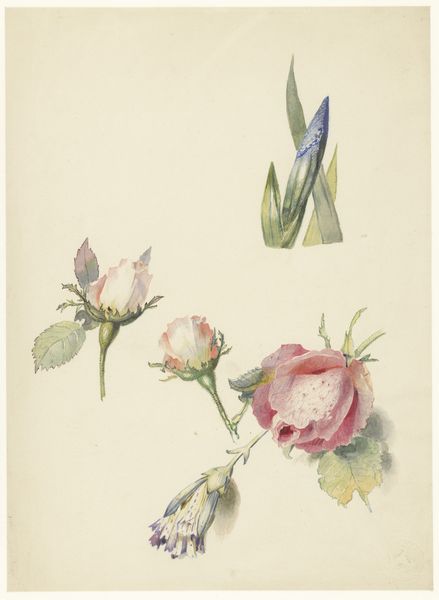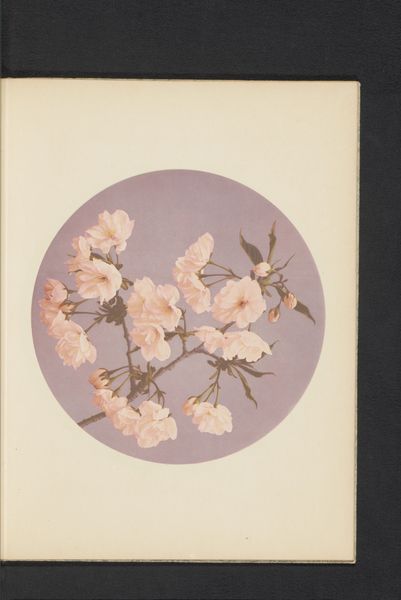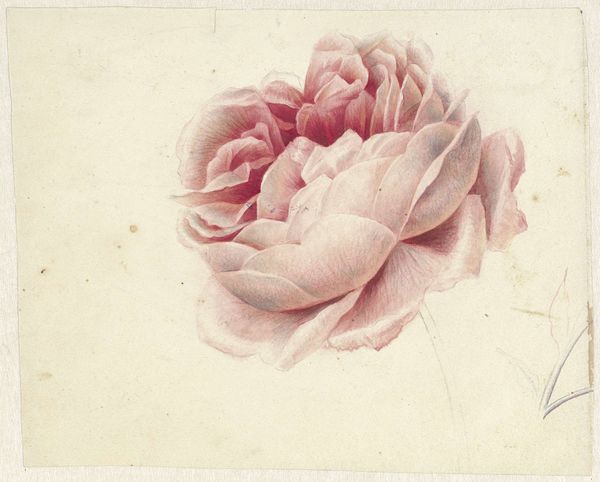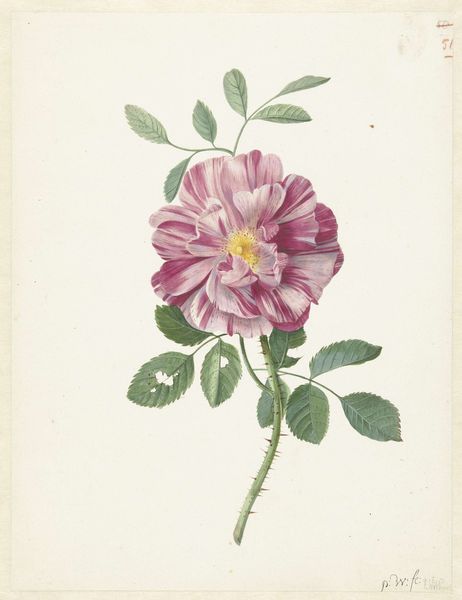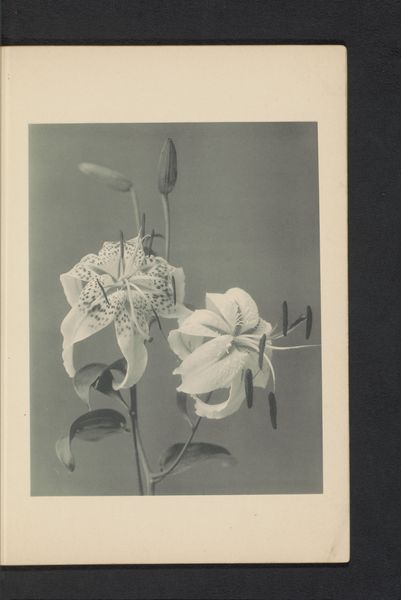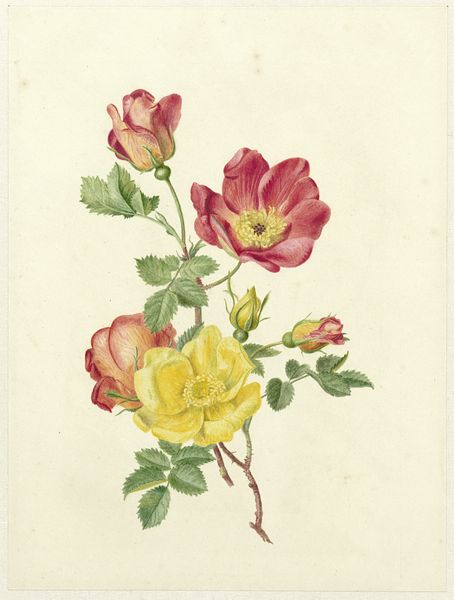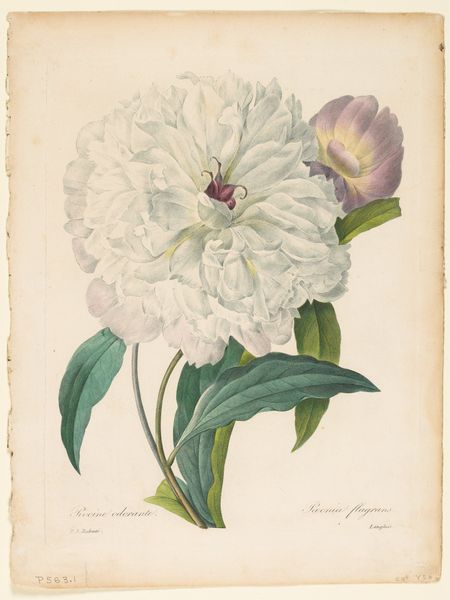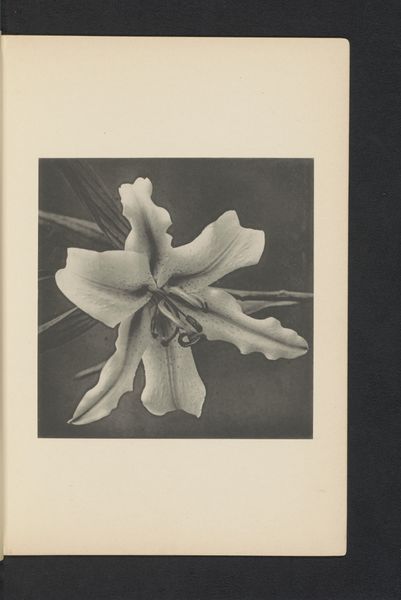
paper, photography
#
still-life
#
paper
#
photography
#
coloured pencil
#
japonisme
#
watercolor
Dimensions: height 211 mm, width 212 mm
Copyright: Rijks Museum: Open Domain
Curator: Here we have "Pioenroos" – Peony – by Kazumasa Ogawa. Created before 1897, it’s a gelatin-silver print with meticulously hand-painted color. What strikes you when you look at this, Editor? Editor: The first thing that hits me is the sense of fragility. Those soft, almost luminous petals… It's as if they could dissolve with a touch. There's a quietness, a contemplative stillness, like a whispered secret. Curator: That’s beautifully put. Ogawa was a pioneer in photography and printing techniques, and a major figure in Japonisme – the Western obsession with Japanese art and design. His studio produced countless photographic albums intended to be sold to Western tourists who flocked to Japan. Editor: Oh, I see. So, these weren’t really artworks for local Japanese audiences but really for European consumption? That completely changes the frame, doesn’t it? It becomes a study in how one culture exoticizes another, especially during that colonial moment. Curator: Exactly. Peonies themselves carried significant symbolic weight, representing wealth and status, beauty, and ephemeral nature of life, reflecting some popular motifs explored by European modern artists, as they discovered Japanese visual culture. Ogawa carefully arranged, photographed, and hand-colored the print with watercolours to make the subject pop in contrast with a neutral backdrop. Editor: And the use of hand-colouring makes it hover in this liminal space between photography and painting, like a trace memory tinted by dreams. It gives it a feeling of longing, or something that's fading away… almost melancholic. It's such a potent mix. Curator: It is. While part of the broader phenomenon of Japonisme, which sometimes tended toward superficial exoticism, Ogawa's technical skill and artistic sensitivity truly stands out and speaks volumes. The subtlety he achieves transcends simple imitation. Editor: I think I initially overlooked that complexity. Now, looking again with that context, it deepens my understanding, and I appreciate Ogawa's artistry and the interesting story surrounding its cultural moment so much more. Curator: Indeed. "Pioenroos," a moment frozen in time, shaped by both Eastern tradition and Western expectation. It's more than just a flower; it’s a symbol of cultural exchange.
Comments
No comments
Be the first to comment and join the conversation on the ultimate creative platform.
